EARLY HISTORY
Lake Grove was settled in the early 1700’s along Middle Country Road, which was then part of the Old Kings Highway. This road had been established in the 1600’s and led to various destinations in Brookhaven Town. Lake Grove became one of Long Island’s oldest and busiest crossroad communities.
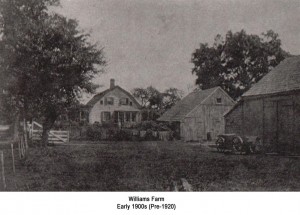 By the 1800’s Lake Grove was well populated, mainly by farmers who worked the land in the spring and summer and taught school or built roads in winter. Others cut ice from Lake Ronkonkoma and local ponds. The ice was stored in ice houses for summer use. Gould Pond had two ice houses along its shores.
By the 1800’s Lake Grove was well populated, mainly by farmers who worked the land in the spring and summer and taught school or built roads in winter. Others cut ice from Lake Ronkonkoma and local ponds. The ice was stored in ice houses for summer use. Gould Pond had two ice houses along its shores.In 1870, Lake Grove established its first Post Office with Abraham Roseman as the original Postmaster. The mail was carried to and from the Lakeland, L. I. Railroad Station by horse and wagon.
In the late 1800’s Charles L. Smith built a General Store which stood on the southwest corner of Hawkins Avenue and West Road(now Moriches Road). This store was destroyed by fire and Samuel Hawkins then built a two story building on the opposite corner which became the General store. As was the custom in small communities of that time, the General Store became one of the major centers of social activities.
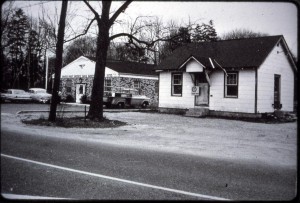 The Post Office was another popular meeting place for local residents. Not much later a Blacksmith’s shop was built by Charles E. Thorne on the south side of West Road. These establishments created a kind of “Downtown” social center for the residents of the Lake Grove area.
The Post Office was another popular meeting place for local residents. Not much later a Blacksmith’s shop was built by Charles E. Thorne on the south side of West Road. These establishments created a kind of “Downtown” social center for the residents of the Lake Grove area.
During this period Lake Grove had its own – public school located on the corner of Smith Road and Hawkins Avenue. The school served students from Ronkonkoma, Lake Ronkonkoma, Lake Grove and the west side of the lake. A new school was built in 1912 at School Street and Hawkins Avenue. It was later destroyed by fire.
Two other important public buildings were the Lake Grove Methodist Church and the New Village Congregational Church. The Lake Grove Methodist Church was built in the 1700’s. The original church burned down and a new one was erected. This building now serves as the Parish Nursery School.
 In 1907, a larger church was built along Hawkins Avenue. It was later moved to face Smith Road and is now known as the United Methodist Church. The First Congregational Church of New Village was built in 1812 along Middle Country Road. The congregation moved to a larger facility in 1961 and in 1972, the Town of Brookhaven decided to preserve the building as an Historic Site and its image appears on the official seal of the Village. After Lake Grove deeded the building to Brookhaven, the building and grounds were restored under the supervision of Town Historian, David Overton.
In 1907, a larger church was built along Hawkins Avenue. It was later moved to face Smith Road and is now known as the United Methodist Church. The First Congregational Church of New Village was built in 1812 along Middle Country Road. The congregation moved to a larger facility in 1961 and in 1972, the Town of Brookhaven decided to preserve the building as an Historic Site and its image appears on the official seal of the Village. After Lake Grove deeded the building to Brookhaven, the building and grounds were restored under the supervision of Town Historian, David Overton.
Numerous changes came about in Lake Grove after World War I. The General Store was closed and the Post Office moved to the home of James Gould (now the Old Village Hall) with Harold Gould as Postmaster.
During the early 1900’s Lake Ronkonkoma became a popular area for recreation. Soon thereafter, the Babcock Company started a land development around Davis Farm on Smith Road. Small summer houses were built on private roads. Many of these houses are still standing and are used as permanent homes. Later, most of the roads were deeded to the Town of Brookhaven. In 1921, a new Post Office was erected and given the name of Centereach.
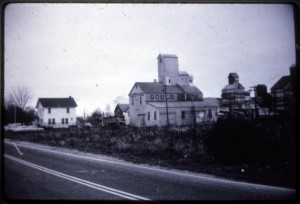 The next housing development built in Lake Grove was called Brook Lawn and was located on Stony Brook Road. This was the start of the use of the name Stony Brook in the Lake Grove area. More developments followed and the population of Lake Grove increased rapidly. In 1968, the construction of the Smith Haven Mall caused local residents to become concerned about the impact of new businesses and increased traffic in their community. Lake Grove was growing hap hazardously and the zoning was ill considered. This threatened to destroy the peaceful nature of the village.
The next housing development built in Lake Grove was called Brook Lawn and was located on Stony Brook Road. This was the start of the use of the name Stony Brook in the Lake Grove area. More developments followed and the population of Lake Grove increased rapidly. In 1968, the construction of the Smith Haven Mall caused local residents to become concerned about the impact of new businesses and increased traffic in their community. Lake Grove was growing hap hazardously and the zoning was ill considered. This threatened to destroy the peaceful nature of the village.
INCORPORATION
In order to gain local control of the zoning and planning of their community and to defend Lake Grove from unregulated growth, the committee for the Incorporation of Lake Grove was formed.
Members of the committee felt that better guidance of the growth of Lake Grove could be achieved and administered by neighbors within their own community.
Alex Pisciotta became Chairman of the Committee for the Incorporation of Lake Grove. After nine months of census taking and petitions, Lake Grove was finally incorporated by a vote of 552 to 332 on September 9, 1968.
When the time came for Lake Grove to elect its first officials, the Committee for the Incorporation split into different factions. The Village Interest Party selected as their candidate Martin Metzner instead of Alex Pisciotta, who then affiliated himself with the Independent Party. The Independent Party and Mr. Pisciotta won all the Village positions. Mr. Pisciotta became the first Mayor of the Village of Lake Grove. A third party, the INC OUT party, made a strong effort to un-incorporate the village but failed. Another attempt was made in 1970 but it was also defeated.
In the years to come, other political parties tried either to unseat Mayor Pisciotta or to decrease his power by appointing an administrator, but all attempts were unsuccessful. Mayor Pisciotta was elected 7 times and retired in 1981. Lake Grove then elected its second Mayor, Lillian Griffin who served seven terms from 1981 to 1995. In 1995 Robert J. Henke defeated Lillian Griffin and became Lake Grove’s third Mayor. He served three terms from 1995 to 2001 followed by Scott D .Middleton who served 2001 to 2005. Our fifth and current Mayor is Robert J. Scottaline.
LAKE GROVE – TODAY
Since the Incorporation of Lake Grove in 1968, much has changed. The opening of the Smith Haven Mall in March of 1969 had created a commercial boom, attracting new businesses, banks and professional services to the Village. Most of these are located along Middle Country Road. Lake Grove has become a commercial hub for a large part of Suffolk County.
Numerous large and small housing developments have sprung up and are still being built. Lake Grove’s population has grown from 5,000 in 1968 to over 11,000 in 2003 and our roadways have expanded from 20 to 44 miles.
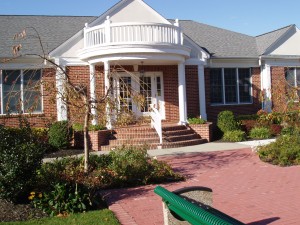 In spite of these changes, Lake Grove has retained its character of a small suburban village. As soon as one leaves the highly trafficked major roads one enters into quiet, tree lined streets with well kept yards and homes. Children can still safely play in most streets. Several new parks have been developed throughout Lake Grove. Many Village residents have found employment in the nearby shopping centers, businesses and offices. Young people are able to work near their homes after school and during their vacations. We have some of the best shopping facilities right at our doorstep and ready access to public transportation. All these advantages make Lake Grove a most desirable place to live.
In spite of these changes, Lake Grove has retained its character of a small suburban village. As soon as one leaves the highly trafficked major roads one enters into quiet, tree lined streets with well kept yards and homes. Children can still safely play in most streets. Several new parks have been developed throughout Lake Grove. Many Village residents have found employment in the nearby shopping centers, businesses and offices. Young people are able to work near their homes after school and during their vacations. We have some of the best shopping facilities right at our doorstep and ready access to public transportation. All these advantages make Lake Grove a most desirable place to live.
Lake Grove Recreation Hall (picture)
With the building of the Recreation Hall the Village has created a community center that provides a meeting place for local organizations from the Scouts to the Senior Citizens.
Numerous recreational and educational programs are being sponsored throughout the year by the Village, thus helping to foster a true sense of community for many of our residents.
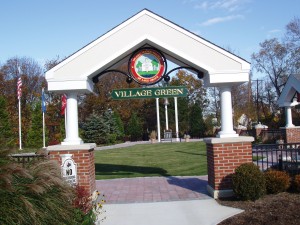 Lake Grove has remained one of the most fiscally sound Villages in Suffolk County. The assessed valuation of the Village has grown from 4 1/4 million to million to over 13 million with no debts or deficit. Our present officials are working hard as a cooperative team to maintain the quality of life which our residents have come to expect in the Village of Lake Grove.
Lake Grove has remained one of the most fiscally sound Villages in Suffolk County. The assessed valuation of the Village has grown from 4 1/4 million to million to over 13 million with no debts or deficit. Our present officials are working hard as a cooperative team to maintain the quality of life which our residents have come to expect in the Village of Lake Grove.
We hope that the outstanding work our Village administrators have accomplished will continue and carry Lake Grove into a future of Prosperity and Success.
